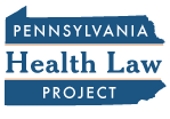State Issues Medicaid Budget Summary
The Pennsylvania Department of Public Welfare’s Office of Medical Assistance Programs has released a summary and overview of its recently passed FY 2014 Medicaid budget.
Find the overview document here .
.
The Pennsylvania Department of Public Welfare’s Office of Medical Assistance Programs has released a summary and overview of its recently passed FY 2014 Medicaid budget.
Find the overview document here .
.
The Pennsylvania Department of Public Welfare is considering instituting a Medicaid observation rate for some hospital services.
According to a recently published Pennsylvania Bulletin,
The Department is considering the establishment of an observation rate for hospital cases for which an inpatient admission is not medically necessary but medical observation of a patient is required. The Department is currently considering developing criteria under which observation services provided by a hospital may be compensable under the MA Program. The Department intends to establish a comprehensive rate to cover observation services determined to be compensable under the Program.
DPW will accept written comments about this proposal for the next 30 days.
Read the Pennsylvania Bulletin notice here .
.
The chairman of the Pennsylvania House Appropriations Committee has introduced a bill proposing a budget for the state’s 2014 fiscal year.
House Bill 1437, sponsored by Rep. Bill Adolph (R-Delaware), calls for $100 million less spending than the $28.4 billion budget proposed by Governor Tom Corbett in February.
The bill also includes a number of differences in proposed spending for Medicaid and Department of Health programs.
For a summary of the bill, with an emphasis on provisions with the greatest interest to Pennsylvania’s safety-net hospitals, please hit the “contact us” link at the top of this screen.
The Pennsylvania Health Law Project has published the March 2013 edition of Health Law PA News, its monthly newsletter.Features this month include articles about the governor’s proposed FY 2014, prospects for Medicaid expansion, coming Affordable Care Act changes, the final expansion of HealthChoices, and more.
Find a link to the complete newsletter here , on the web site of the Pennsylvania Health Law Project.
, on the web site of the Pennsylvania Health Law Project.
Acting Department of Public Welfare Secretary Beverly Mackereth appeared before the Senate Appropriations Committee this week for the first time to present and defend her department’s proposed FY 2014 – including its Medicaid budget.
Mackereth, herself a former member of the state House, also responded to committee members who questioned Governor Corbett’s decision not to expand Medicaid eligibility in the state, as provided for in the federal Affordable Care Act.
She also promised more dialogue with the General Assembly in the future.
Read more about Ms. Mackereth’s budget testimony before the Senate Appropriations Committee in this Allentown Morning Call article
Saying there are better ways to reach more people, Pennsylvania Department of Health officials are considering closing half of the state’s health centers, many of which serve rural parts of the state.
The state would then focus on better ways of reaching people with public health services.
Learn more about this potential policy initiative in this Harrisburg Patriot-News report
Department of Health
Pennsylvania Governor Tom Corbett recently unveiled his proposed state FY 2014 budget. The day he did, members of the Safety-Net Association of Pennsylvania (SNAP) immediately received a comprehensive mem o outlining the governor’s budget proposal with an emphasis on the issues that matter most to the state’s 61 private safety-net hospitals.
o outlining the governor’s budget proposal with an emphasis on the issues that matter most to the state’s 61 private safety-net hospitals.
Over a seven-day period, SNAP has presented in this space the highlights of the governor’s budget, again with an emphasis on Medical Assistance and other matters of special interest to Pennsylvania’s safety-net hospitals. In this final installment, SNAP takes a look at what that budget proposes for the state’s Department of Health.
The Department of Health’s budget calls for a number of spending cuts. Among them, it calls for the complete elimination of funding associated with its diabetes, poison control centers, Tourette Syndrome, epilepsy support services, lupus, trauma coordination, ALS support services, and biotech research programs. Together, this accounts for a $6.3 million cut in Health Department funding.
On the other hand, the department’s proposed budget includes $4 million in grants to clinics to improve access to primary care in medically underserved areas and $1 million in new money to support 24 additional loan repayment grants to enhance the recruitment of doctors to medically underserved areas.
The Children’s Health Insurance Program
Pennsylvania Governor Tom Corbett recently unveiled his proposed state FY 2014 budget. The day he did, members of the Safety-Net Association of Pennsylvania (SNAP) immediately received a comprehensive memo outlining the governor’s budget proposal with an emphasis on the issues that matter most to the state’s 61 private safety-net hospitals.
Over a seven-day period, SNAP presents in this space the highlights of the governor’s budget, again with an emphasis on Medical Assistance and other matters of special interest to Pennsylvania’s safety-net hospitals. Today, SNAP takes a look at what the proposed budget says about the Children’s Health Insurance Program.
The governor’s proposed FY 2014 budget includes $24 million in new money for the Children’s Health Insurance Program (CHIP). This additional funding will support the addition of more than 9300 children to the program.
Tomorrow: Department of Health

Other Medical Assistance Issues
Pennsylvania Governor Tom Corbett recently unveiled his proposed state FY 2014 budget. When he did, members of the Safety-Net Association of Pennsylvania (SNAP) immediately received a comprehensive memo outlining the governor’s budget proposal with an emphasis on the issues that matter most to the state’s 61 private safety-net hospitals.
Over a seven-day period, SNAP presents in this space the highlights of the governor’s budget, again with an emphasis on Medical Assistance and other matters of special interest to Pennsylvania’s safety-net hospitals. Today, SNAP takes a look at what the proposed budget says about Medical Assistance issues not addressed in parts one through four of this series.
The proposed budget calls for a number of other changes in Medical Assistance spending, including:
Medical Assistance Supplemental Payments
Last Tuesday, Pennsylvania Governor Tom Corbett unveiled his proposed state FY 2014 budget. Later that day, members of the Safety-Net Association of Pennsylvania (SNAP) received a comprehensive memo outlining the governor’s budget proposal with an emphasis on the issues that matter most to the state’s 61 private safety-net hospitals.
Over a seven-day period, SNAP presents in this space the highlights of the governor’s budget, again with an emphasis on Medical Assistance and other matters of special interest to Pennsylvania’s safety-net hospitals. Today, SNAP takes a look at what the proposed budget says about Medical Assistance supplemental payments.
Governor Corbett has proposed no change in the state’s spending on OB/NICU, burn center, and trauma center payments. Because of the reduction in the state’s federal medical assistance percentage (FMAP, or the rate at which the federal government matches state Medicaid spending), total payments to hospitals in each of these programs stands to decline 1.7 percent.
The total amount available for tobacco uncompensated care payments is slated for a 3.3 percent decrease, from $56.5 million to $54.7 million. This reflects two factors: a 1.7 percent decrease in money available from the tobacco settlement fund and the state’s reduced FMAP rate.
While total funding for physician practice plans is slated for an 18.9 percent decrease, this appears to reflect a decision to remove from this category one hospital that was added to the group last year. This would mean funding for physician practice plans would remain the same – as it would for academic medical center disproportionate share hospital payments (DSH).
Critical access hospital payments have been targeted for a $500,000 cut in state funds.
Inpatient DSH, outpatient DSH, medical education, and Community Access Fund payments do not have their own line-items in the proposed budget and therefore cannot be specifically identified in that budget. Traditionally, however, when an administration is contemplating changes in these payments, it indicates so in the programmatic revision commentary section of the budget document. In the case of these four payments that are so vital to so many Pennsylvania safety-net hospitals, they were not mentioned in the programmatic revision commentary.
Next Monday: Other Medical Assistance Issues
